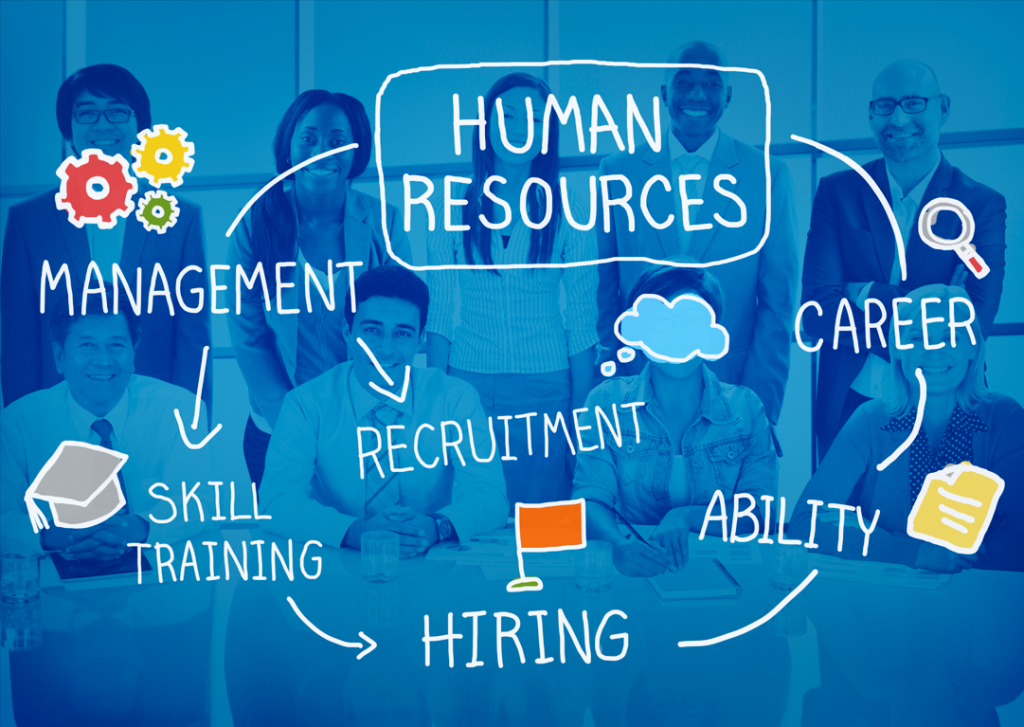Human resources play a vital role in the success of any organization. Its main role is about managing and developing the human element in the company, recruiting and selecting the right employees, developing training programs, managing performance and rewards, and many more aspects. In this article, we’ll review some of the main areas of HR work and their basic functions.
Recruitment and selection of human resources
This area includes the planning of functional needs, which includes several roles, such as:
- Develop recruitment strategies.
- Conducting selection processes and interviews.
- Evaluation of candidates.
- Make final hiring decisions.
When potential employees are identified, their information is sent to the company’s Recruitment Manager for further review. Once a candidate has been selected for a position, HR specialists work on determining the employee’s start date, preparing new recruitment papers, and submitting other relevant materials applicable to the position they are occupying.
Training and development
This field is aimed at improving the skills and abilities of employees by designing and implementing appropriate training programs, assessing the impact of these programs on the overall performance of employees.
The development focuses on the career advancement of each employee, with activities based on everyone’s professional goals and areas of improvement needed to help them in the next step in their career.
Change and innovation management
This area includes the management of organizational changes and the implementation of internal transformation strategies, the promotion of a culture of innovation in the organization, the provision of an environment that encourages the utilization of new ideas and continuous improvement.
Performance management
It is a tool used by organizations in creating a work environment that enables employees to provide the best of their abilities to produce work with the highest quality and efficiency possible by:
- Setting clear goals and performance standards for employees.
- Regularly evaluate their performance.
- Provide feedback and guidance to improve performance.
- Develop personal improvement plans.
Management of bonuses and benefits
This area includes the development and implementation of a fair system of financial and non-financial rewards and benefits, such as salaries, annual bonuses, health insurance, vacations, etc., to enhance employee satisfaction and maintain a balance between personal and institutional interest.
HR specialists are also working on negotiating a comprehensive compensation package strategy with potential employees, including basic salary, health, life, dental, disability insurance, paid vacations, and more.
Human resources planning
This area includes the analysis of the company’s current and future human resource needs, the development of strategies to meet these needs, such as:
- Follow-up recruitment and training.
- Develop proactive plans to compensate for possible transfers and resignations.
- Analysis and description of functions
This area is aimed at analyzing and documenting the tasks and responsibilities related to each job in the organization, preparing a clear job description that will help understand the role of the employee and determine the requirements for employment.
Developing policies and procedures
This area includes the development and updating of policies and procedures for human resources management, such as recruitment, training, performance and remuneration policies, to ensure compliance with labor legislation and achieve the goals of the organization.
Data analysis and reports
This field uses tools and techniques to analyze data related to human resources, such as employee recruitment and retention rates, and provides reports and analysis that help make strategic decisions that affect the work and overall performance of the organization.
Human operations and policy management
This area includes the development and implementation of human resources policies and procedures to achieve compliance with laws and operational regulations, ensure coordination between different departments and improve the efficiency of internal processes.
Development of corporate culture and strategic direction
This area is aimed at strengthening the culture of the enterprise and its core values among employees, guiding the goals and strategic vision of the organization, ensuring the compatibility of daily work with the overall goal of the organization.
Safety and health issues in the workplace: Human Resources Concerns
Whether working on site or remotely, a safe and healthy workplace is essential to protect workers from injury and illness. Keeping employees safe also reduces the costs of benefits paid when an employee is injured or sick, reduces absenteeism and turnover, increases productivity and quality, and boosts morale.
Although safety standards and requirements vary by industry and some professions operate at a higher risk of injury than others, all employers have a duty to provide a safe working environment. As part of the company’s compliance with workplace safety and health issues. HR specialists are able to maintain corporate compliance by familiarizing themselves with occupational safety and health standards, developing guidelines on ways to achieve and maintain a safe working environment.
In general, human resources are the backbone of any successful organization, involving a wide range of core areas and functions. By understanding these areas and their tasks, companies can apply strong HR management practices and enhance the overall performance of the team.
These areas emphasize the importance of human resources in business management comprehensively. Therefore, organizations should be aware of the importance of investing in human resources and recruiting, developing and motivating the right personnel. By implementing effective HR strategies, companies can enhance performance, creativity and competitiveness in a changing labor market.
Sources:
